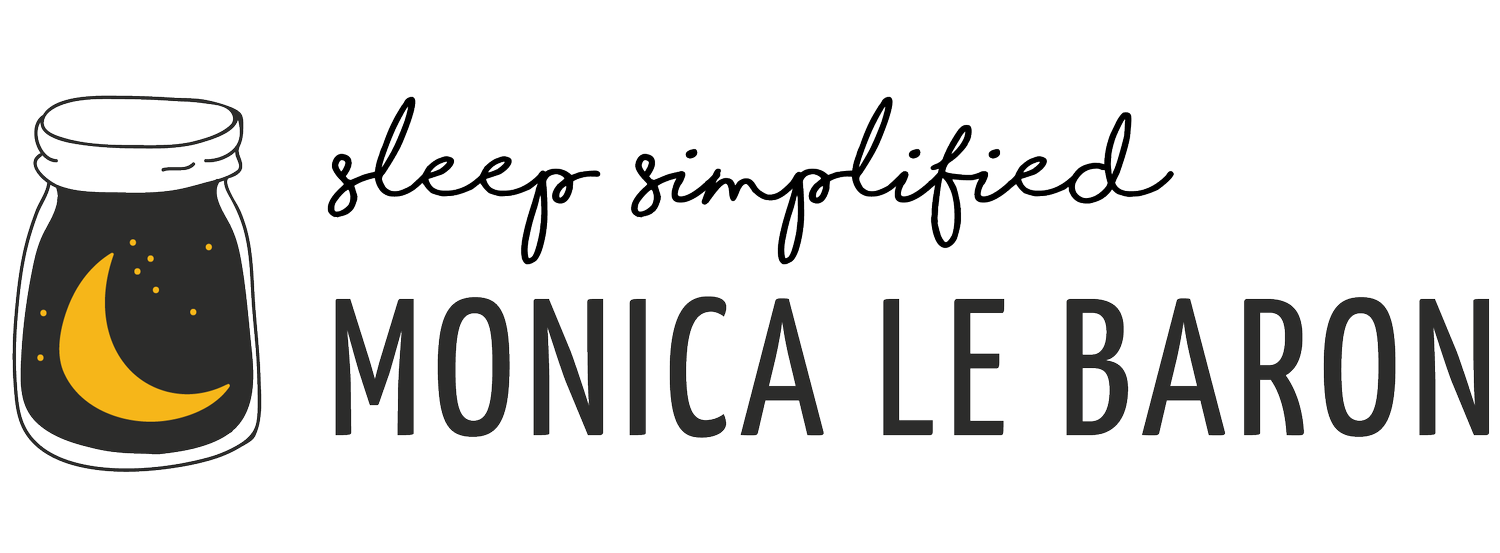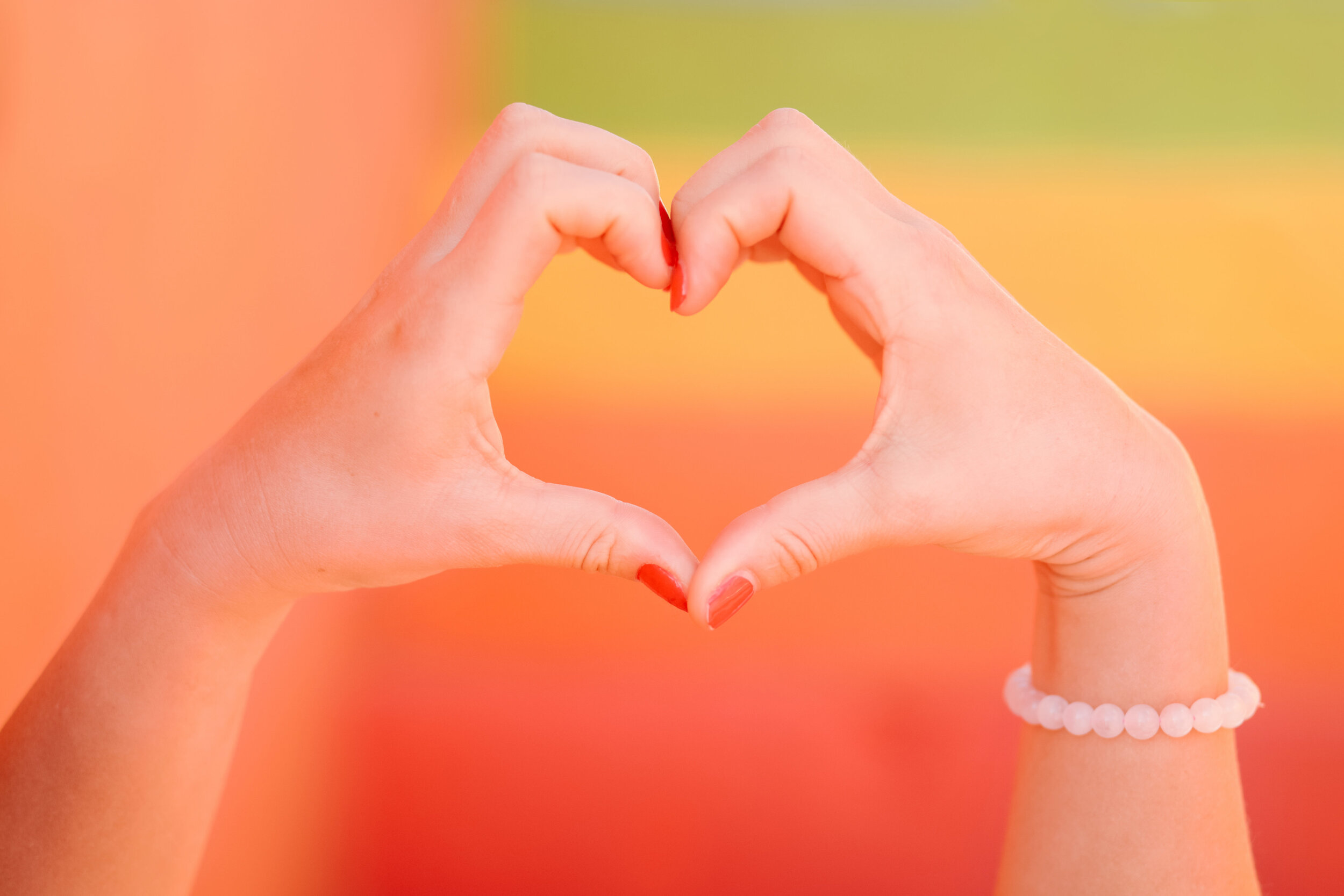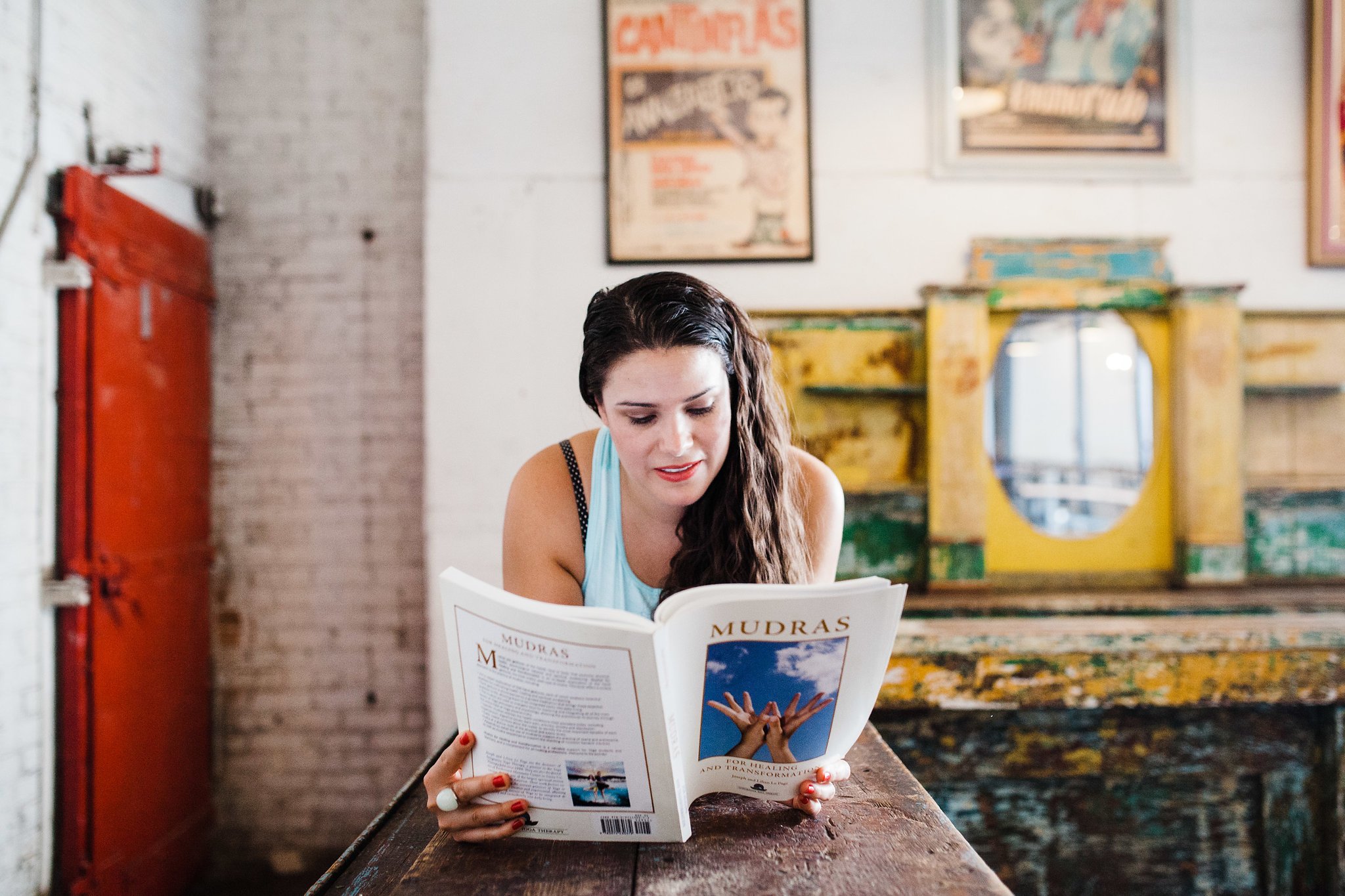3 Simple Mudras for Healing and Transformation
Your body, mind and soul have the capacity to heal themselves. They just need enough time and the right conditions to do so. With Mudras, you can create these adequate conditions in your healing journey without the hassle of a complicated routine or spending hours practicing them.
I have been using hand mudras since 2017, when I discovered them during my yoga teacher training at Kripalu. Initially, I was surprised—and a little skeptical —to discover how effective they are.
According to my teacher, Joseph Le Page, in his book Mudras for Healing and Transformation, Mudras are “gestures that can be done with the hands, face, and body to promote physical health, psychological balance, and spiritual awakening.”
Mudra practice allows us to explore and integrate all the layers of our being. This supports our journey toward optimal health, healing, and transformation. And the best part is that Mudras are super simple to use in your busy schedule and to add them to your healing practice.
I know you’re excited to start your mudra practice, but don’t worry we will get there. But first, they’re really important things to consider before getting started. Let’s dig into them.
Precautions to take while practicing Mudras:
Please, never use Mudras in place of medical treatment. If a doctor is currently treating you, pay attention to any changes that may occur when practicing Mudras, such as changes in your blood pressure.
Review if the particular mudra you’re practicing has specific contraindications, be aware before beginning your practice.
Is possible that some mudras may feel uncomfortable. Never force the practice of any gesture. Always stay within your comfort level.
Some gestures may not be suitable for you at a particular time. Instead, try mudras with similar effects.
Only relaxing, calming, and soothing mudras should be practiced before bedtime.
Discomfort in the hands and fingers can occur if complex mudras are held for long periods. It is OK to begin holding a mudra, release it as needed while visualizing it, and then return to it when you are comfortable.
The support and guidance of an experienced Yoga teacher, Yoga therapist, or spiritual guide are recommended, especially when working with health conditions or with mudras that explore the more subtle realms of being.
Ready to start practicing mudras?
Let’s start with my and my client's favorite one.
Adhi Mudra
This is one of the most calming gestures, perfect for supporting a good night’s sleep and adding to your healing toolbox.
This was the first mudra I learned from my Yoga Therapist, Nasim Mani, and I still practice it before bedtime or when I need to calm down.
My clients love to practice Adhi Mudra when they wake up in the middle of the night and can’t fall back to sleep.
Adhi means “primordial” and refers to the stillness of our essential being. This mudra directs breath, awareness, and energy to the base of the body, instilling a sense of support and grounding.
Scale from calming to energizing: 0 out of 10
Especially helpful for:
Connecting with the stillness of our essential being.
Supporting the strength and density of the bones.
Instilling a sense of grounding.
Supporting the treatment of anxiety.
Especially helpful to support a seated meditation.
Precautions: As this gesture can lower blood pressure, people with low blood pressure should carefully monitor the effects.
Instructions: You may follow these simple instructions while lying in bed, sitting for meditation, or any other time you need some grounding.
Tuck the thumbs into the palms and curl the fingers loosely around the thumbs, forming soft fists with both hands.
Rest the hands onto the thighs or knees, with the palms facing down (in the photo above, the hands are facing up for illustration purposes).
Relax the shoulders and take a few breaths. Try to relax and notice the effects of this mudra.
Gesture of the open heart or Purna Hridaya Mudra. Photo by Tiffany Hudson.
Purna Hridaya Mudra
This hearth shape is not just the latest 🫶emoji trend. It’s also a creative tool to uplift your energy levels, and to support a healthy heart.
Purna means "full," and hridaya means "heart.” Purna Hridaya mudra supports the opening of our subtle heart by expanding the breath in the chest, side ribs, and upper back, expanding breath capacity. The heart opening cultivated by this gesture enhances our ability to embrace thoughts and feelings, welcoming them more easily and support healing and transformation.
Scale from calming to energizing: 5 out of 10
Especially helpful for:
Becoming comfortable with our psycho-emotional being.
Releasing muscular constriction from the chest.
Improving breath capacity.
Enhancing immunity.
Supporting the treatment of depression.
Precautions: None
Instructions:
Hold the hands in front and create a heart shape.
Relax the shoulders back and down with the elbows held away from the body and the spine naturally aligned if you’re sitting.
Hold this gesture for 5-10 breaths or until it feels comfortable.
Enjoy!
Hakini Mudra by alesaldana.com
Hakini Mudra
Hakini is the goddess associated with the third eye, the center of inner wisdom, and Hakini mudra supports the unfolding of wisdom within all the dimensions of your being. It balances all the chakras, systems of the body, elements, and doshas.
Scale from calming to energizing: 5 out of 10
Especially helpful for:
Instilling a sense of wholeness and integration.
Facilitating Full Yogic Breathing.
Supporting overall health and healing.
Enhancing body awareness.
Precautions: None
Instructions:
Hold the hands facing each other in front of the solar plexus (right below your ribs).
Gently touch the tips of all fingers and thumbs to the same fingers on the opposite hand.
Hold the hands open and round as if holding a globe.
Relax the shoulders back and down, with the elbows held slightly away from the body, forearms parallel to the earth, and the spine naturally aligned.
Notice your breath and hold this mudra for 5-10 breaths or until it feels comfortable.
Tips to start your Mudra practice:
An excellent way to begin a mudra practice is to hold a mudra silently for five to ten breaths, then gradually work up to holding the gesture for up to five minutes or until it feels comfortable.
Holding gestures silently for a few minutes daily will help deepen your sensitivity, allowing you to explore its effects at each layer of your being: physical, energetic, psycho-emotional, wisdom, and spiritual.
A short body relaxation practice and hand warm-ups can help release tension before mudra practice.
The effects of a particular mudra may not appear immediately, even if you’re a lifetime practitioner. Allow yourself to enjoy the journey and for it to unfold gradually.
The recommended pressure for holding a mudra is similar to holding a fork, neither too loose nor too tight.
It’s preferable to let the tips of your fingers touch each other (skin to skin), adjust your fingers until you find the optimal point of contact, and, if possible cutting your nails might be a good idea.
Allow the gesture to naturally guide your breath without controlling the length or the way you breathe.
An empty stomach is optimal for mudra practice. If practicing after meals, wait around thirty minutes, especially if you working with mudras that support a healthy digestive system.
Mudras can be practiced at any time, anywhere and in any state of mind. They can be used while lying down, sitting, or standing. Dawn and dusk are optimal times, but is essential to create the time and space that works the best time for you and your lifestyle.
Conclusion
Mudras are simple and powerful tools that you own in the palm of your hand to support healing and transformation.
The more you practice them, the better your body will recognize these gestures as something positive.
If you or someone you love struggle to get a good night’s sleep, my Sleep Simplified 1:1 coaching program might be the right next step for you. Inside Sleep Simplified, I teach my clients how to incorporate mudras and other simple tools to calm the mind, finish the stress cycle and balance the layers of your being to finally get a goodnight’s sleep. Check it out here!
Avocado hugs,
Monica
*Resource: Mudras for Healing and Transformation by Joseph Le Page, and Lilian Aboim




